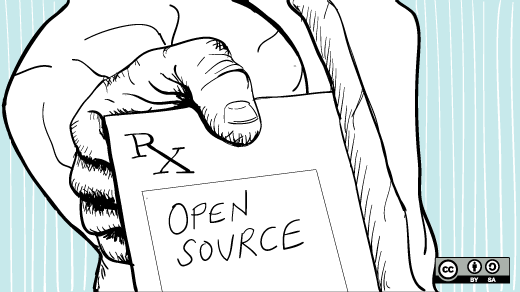How the DevOps model will build the new remote workforce

Most importantly, the humans managing systems ultimately determined the
company's capacity to adapt to the pandemic. "We recognized that … the systems
may need to scale, and we may need to make changes to meet a new global
demand, [but] that is much different than how our peers, the people we care
about and work with, are going to be impacted by this," Heckman said. Thus,
the SRE team's role was not just to watch systems and shore up their
reliability, but also to manage communications with other employees, Heckman
said, "not only so they had the current context of what we were thinking,
suggesting and where we were headed, but also to give them some confidence
that the system around them would be fine." Similar principles must be applied
to manage the human impact of a longer-term shift to remote work, said Jaime
Woo, co-founder of Incident Labs, an SRE training and consulting firm, in a
separate presentation at the SRE from Home event. "The answer is not 'just be
stronger,'" for humans during such a transition, any more than it is for
individual components in a distributed computing system under unusual traffic
load, Woo said.
From Defense to Offense: Giving CISOs Their Due
CISOs are now in a position where they must — somehow — reinvent how they work
and how they are perceived within their organizations. Historically, they have
been the company's risk-averse first line of defense against cyberattacks, and
have been viewed as such. But this state of affairs needs to evolve. "CISOs
cannot afford to be seen as blockers of innovation; they must be
problem-solvers," says Kris Lovejoy, EY Global Advisory Cybersecurity Leader,
in EY's report. "The way we've organized cybersecurity is as a
backward-looking function, when it is capable of being a forward-looking,
value-added function. When cybersecurity speaks the language of business, it
takes that critical first step of both hearing and being understood. It starts
to demonstrate value because it can directly tie business drivers to what
cybersecurity is doing to enable them, justifying its spend and
effectiveness." But do current CISOs have the right skills and experience to
work in this new way and serve in a more proactive and forward-thinking role?
That's an open question, and the answer will probably demand a new breed of
CISO whose job is not driven mainly by threat abatement and compliance.
Want an IT job? Look outside the tech industry

It's always been true that most software was written for use, not sale.
Companies might buy its ERP software from SAP and office productivity software
from Microsoft, but they were writing all sorts of software to manage their
supply chain, take care of employees, and more. What wasn't true then, but is
definitely true now, is just how much of that software spend is now focused on
company-defining initiatives, rather than back-office software meant to keep
the lights on. Small wonder, then, that in the past year companies have
posted nearly one million jobs in the US, according to the Burning Glass data,
which scours job postings. That number is expected to increase by more than
30% over the next few years, with non-tech IT jobs set to boom at a 50% faster
clip than IT jobs within tech. As for who is hiring, though tech companies top
the list (arguably one of them isn't really a tech company), the rest of the
top 10 are decidedly non-tech. Digging into the Burning Glass report, and
moving beyond software developer jobs, specifically, and into the broader
category of IT, generally, Professional Services, Manufacturing, and Financial
Services account for roughly half of all IT openings outside tech.
Data protection critical to keeping customers coming back for more

Despite the growing advancements on the data protection front, 51 percent of
consumers surveyed said they are still not comfortable sharing their personal
information. One-third of respondents said they are most concerned about it
being stolen in a breach, with another 26 percent worried about it being
shared with a third party. In the midst of the growing pandemic, COVID-19
tracking, tracing, containment and research depends on citizens opting in to
share their personal data. However, the research shows that consumers are not
interested in sharing their information. When specifically asked about sharing
healthcare data, only 27 percent would share health data for healthcare
advancements and research. Another 21 percent of consumers surveyed would
share health data for contact tracing purposes. As data becomes more valuable
to combat the pandemic, companies must provide consumers with more background
and reasoning as to why they’re collecting data – and how they plan to protect
it. ... As the debate grows louder across the nation, 73 percent of
consumers think that there should be more government oversight at the federal
and/or state/local levels.
The power of open source during a pandemic

The world needs to shift the way it's approaching problems and continue
locating solutions the open source way. Individually, this might mean becoming
connection-oriented problem-solvers. We need people able to think communally,
communicate asynchronously, and consider innovation iteratively. We're seeing
that organizations would need to consider technologists less as tradespeople
who build systems and more as experts in global collaboration, people who can
make future-proof decisions on everything from data structures to personnel
processes. Now is the time to start building new paradigms for global
collaboration and find unifying solutions to our shared problems, and one key
element to doing this successfully is our ability to work together across
sectors. A global pandemic needs the public sector, the private sector, and
the nonprofit world to collaborate, each bringing its own expertise to a
common, shared platform. ... The private sector plays a key role in building
this method of collaboration by building a robust social innovation strategy
that aligns with the collective problems affecting us all. This pandemic is a
great example of collective global issues affecting every business around the
world, and this is the reason why shared platforms and effective collaboration
will be key moving forward.
Why Digital Transformation Always Needs To Start With Customers First

A fascinating point regarding Deloitte Insights’ research is the correlation
it uncovered between an organization’s digital transformation maturity and the
benefits they gain in efficiency, revenue growth, product/service quality,
customer satisfaction and employee engagement. They found a hierarchy of
pivots successful enterprises make to keep pursuing more agile, adaptive
organizational structures combined with business model adaptability, all
driven by customer-driven innovation. The most digitally mature organizations
can adopt new frameworks that prioritize market responsiveness,
customer-centricity and have analytics and data-driven culture with actionable
insights embedded in their DNA. The two highest-payoff areas for accelerating
digital maturity and achieving its many benefits are mastering data and
creating more intelligent workflows. Deloitte Insights’ research team looked
at the seven most effective digital pivots enterprises can make to become more
digitally mature. The pivots that paid off the best as measured by revenue,
margin, customer satisfaction, product/service quality and employee engagement
combined data mastery and improving intelligent workflows.
A searingly honest tech CEO tells the truth about working from home

Morris believes that everyone has what she calls their "Covid Acceptance
Curve." But no two employees' curves are likely to be alike. "Many possible
solutions for one employee are actually counter-indicated for others," she
says. "Think of your team as an overlapping series of waves, each strand
representing a person and their curve. You could try to slot in a single
solution across 'strands,' but it will inevitably miss so many marks, reaching
people too late, too early or with something that isn't even relevant to
them." Some might imagine that one of the particular failings of tech
leadership is the temptation to treat all employees with one broad free lunch.
There, that should please everyone. Now, says Morris of her employees: "Some
are experimenting with how to juggle work and homeschooling, some are
struggling with crippling isolation, some have been impacted by Covid
personally, others are facing anxiety of so many kinds." I wonder whether it
was always this way, but leaders didn't care so much. Each employee has always
been burdened with their own practical and emotional issues not directly
related to work. Now, though, it's the physical distance and the constant,
lonely staring at screens that intensifies difficulties -- and leadership's
ability to anticipate or even understand them.
How does open source thrive in a cloud world? "Incredible amounts of trust," says a Grafana VC

Cloud gives enterprises a "get-out-of-the-burden-of-maintaining-open-source
free" card, but savvy engineering teams still want open source so as to "not
lock themselves in and to not create a bunch of technical debt." How does open
source help to alleviate lock-in? Engineering teams can build "a very modular
system so that they can swap in and out components as technology improves,"
something that is "very hard to do with the turnkey cloud
service." That's the technical side of open source, but there's more to
it than that, Gupta noted. Referring to how Elastic ate away at Splunk's
installed base, Gupta said, "The biggest reason...is there is a deep amount of
developer love and appreciation and almost like an addiction to the [open
source] product." This developer love is deeper than just liking to use a
given technology: "You develop [it] by being able to feel it and understand
the open source technology and be part of a community." Is it impossible
to achieve this community love with a proprietary product? No, but "It's a lot
easier to build if you're open source." He went on, "When you're a black box
cloud service and you have an API, that's great. People like Twilio, but do
they love it?"
Is Low-Code Or No-Code Development Suitable For Your Startup App Idea?

Speed and adaptability are key ingredients in every product development phase
of a startup. Assume it will take you four months to create and launch the
first version of your product. You spoke with potential customers, gathered,
and implemented their feedback to create the best solution you could build
based on the information you have. If those potential customers need your
solution, they will be looking forward to it. And if they committed
financially, they’re going to be even more eager to use it. The truth is that
in a competitive market where buyers have many options, eagerness and patience
are two different things. The customers may wish to use your product sooner
than later but they will not wait for it. Even if they don’t have better
options today, they will figure out an alternative solution. Now assume you
launched your product, served the first customers and gathered some more
critical feedback. Your customers will not wait months for those changes, no
matter how important your product is for them. Speed and adaptability can make
or break a startup.
Tackle.io's Experience With Monitoring Tools That Support Serverless

Tackle runs microservices such as managed containers on AWS Fargate, deploys its
front end on Amazon CloudFront, and uses Amazon DynamoDB for its database, Wood
says. “We’ve spent a lot of time making sure that our architecture is something
scalable and allows us to provide value to our customers without interruption,”
he says. Tackle’s clientele includes software and SaaS companies such as GitHub,
PagerDuty, New Relic, and HashiCorp. Despite the benefits, Woods says running
serverless can introduce such issues as trying to find obscure failures with
APIs. “Once you adopt serverless, you’ll have a chain of Lambda functions
calling each other,” he says. “You know that somewhere in that process was an
error. Tracing it is really difficult with the tools provided out of the box.”
Before adopting Sentry, Tackle spent a lot of engineering hours trying to
discover the root cause of problems, Woods says, such as why a notification was
not sent to a customer. “It might take half a day to get an answer on that.”
Tackle adopted Sentry’s technology initially to get back traces on such errors.
Woods says his company soon discovered Sentry also sends alerts for failures
Tackle was not aware of in its web app.
Quote for the day:
"You can't lead anyone else further than you have gone yourself." -- Gene Mauch
No comments:
Post a Comment